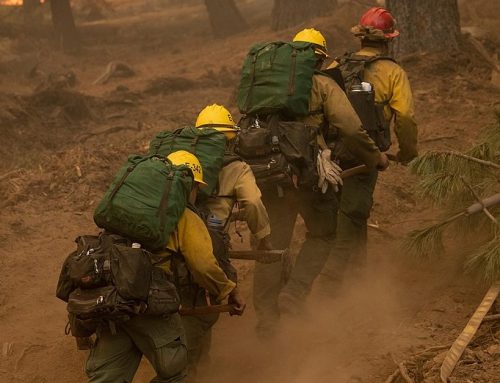Working in hot environments for prolonged periods can be dangerous and even life-threatening if proper precautions are not taken. When the body is unable to regulate its core temperature due to excessive heat, various heat-related illnesses can occur, potentially resulting in permanent injury or even death. As such, it is critical that employers implement appropriate measures to prevent heat stress in their workers. This article will explore key concepts around heat illness, discuss its implications for occupational health and safety, offer practical guidance for prevention, and overview some of the challenges and solutions in this crucial area.
Understanding Heat Illness
There are four main types of heat-related health issues that can impact workers: heat stroke, heat exhaustion, heat cramps, and heat rash.
Heat stroke is the most serious heat illness, occurring when the body’s core temperature rises to dangerous levels, leading to systemic failure. Symptoms include confusion, loss of consciousness, seizures, an extremely high body temperature, and hot, dry skin. Heat stroke is a life-threatening medical emergency requiring immediate medical attention – calling 911 is critically important. First aid measures like moving the worker to a cool area, removing clothing, and applying cold compresses can help stabilize the worker until paramedics arrive.
Slightly less severe but still serious is Heat Exhaustion, which happens when fluid and salt depletion causes the body’s cooling system to start to break down. Symptoms like headache, nausea, irritability, heavy sweating, increased body temperature, and decreased urine output are warning signs. Workers showing possible signs of heat exhaustion should be moved to a cool area, given fluids, have unnecessary clothing removed, and be medically evaluated as soon as possible.
Heat cramps are muscle pains generally caused by physical exertion depleting salt and fluids lost through heavy sweating. They can usually be treated by replenishing fluids and salts orally through water, snacks, and electrolyte replacement drinks. However, under certain medical conditions like heart disease or being on a low sodium diet, prompt medical attention should be sought.
Heat rash is a common skin irritation caused by excessive sweating. Appearing like red pimples or small blisters typically in areas like the neck, chest, groin, or elbows, the best treatment is providing a cooler, less humid work environment. Ointments and creams should be avoided as they can exacerbate the rash.
Risk Factors for Heat Illness
There are a number of risk factors that can increase a worker’s likelihood of experiencing heat illness. High temperature and humidity levels, especially when working long hours in direct sunlight with no shade or breeze, create prime conditions for heat stress. Low fluid intake and strenuous physical activity further increase risk. Obese individuals or those with chronic medical conditions may also be more susceptible. Other factors include lack of acclimatization to hot conditions, having suffered previous heat illness, advanced age over 65, certain medications, pregnancy, and heavy, non-breathable personal protective equipment that traps heat close to the body.
Preventing Heat Stress
The most effective method for preventing heat illness is minimizing exposure to hot conditions. Regularly training workers and supervisors to recognize early signs and symptoms can also enable early intervention before serious illness occurs. Fostering a workplace culture where speaking up about discomfort is encouraged can likewise facilitate this. That said, even in unavoidably hot environments, heat illness can be prevented through several key strategies:
- Provide cool, palatable drinking water in conspicuous, convenient locations and remind workers to frequently sip, before they get thirsty. Urine should be clear to lightly colored to indicate adequate hydration.
- Set mandatory preventative rest periods with water breaks in shaded/air conditioned recovery areas. Rest is just as important as hydration.
- Acclimatize new workers gradually via decreasing workloads and more frequent breaks when starting. Similarly, anyone returning from an absence greater than a week should go through an acclimatization regimen.
- Schedule hot jobs earlier or later in the day during cooler times whenever possible. Reschedule routine maintenance and repairs during cooler months when feasible.
- Reduce physical job demands and change work/rest cycles to increase rest periods during unavoidable heat.
- Supply workers with protective accessories like cooling vests, water-dampened body suits, reflective shields, and insulated gloves whenever working in hot zones.
- For indoor jobs, improve ventilation with fans/air conditioning and insulate hot surfaces. Seal leaks releasing steam and use dehumidifiers to keep floors dry.
Overcoming Challenges
Implementing heat illness prevention measures presents some unique challenges:
- Lack of resources – Monitoring weather, modifying schedules, and providing cooling equipment/recovery areas can be expensive for employers. However, costs pale in comparison to the loss of life or OSHA penalties for non-compliance. Grants may help offset expenses.
- Tight deadlines – While managers feel pressure to complete hot jobs quickly, skipping preventative measures is shortsighted and hazardous. Workers can’t be productive from the ER or grave. Communicating realistic time estimates is key.
- Worker reluctance – Some workers ignore warning signs fearing ridicule for “weakness” or losing pay. Regular safety talks, leading from the top with supervisors demonstrating buy-in, and guaranteed paid rest can help.
Ultimately these barriers underscore why heat awareness must permeate workplace culture. When everyone understands risks and prevention is handled consistently without blame or judgment, heat stress can be minimized.
Conclusion
Preventing debilitating and possibly fatal heat-related illness is a serious concern for occupational health and safety necessitating comprehensive intervention. By recognizing risk factors, early symptoms, and key prevention strategies, employers can fulfill their ethical and legal responsibilities in protecting worker wellbeing, even in hot conditions. While challenges exist in implementation, prioritizing worker safety must prevail. Equipping workplaces with medical emergency plans, mandatory rest protocols, and heat mitigation resources is crucial for avoiding preventable tragedy. When in doubt, calling 911 quickly can also save lives. Through vigilance and caring prevention policies, workers can thrive, even in the heat.
Source material for this article:










